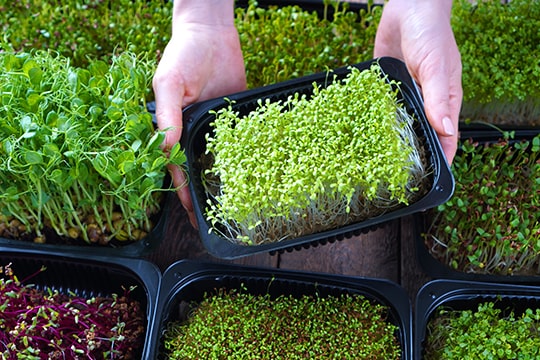Are you looking for an easy and rewarding way to grow your own produce? Microgreens are a great option to start with! These small, young greens pack a flavorful punch and can be used in salads, sandwiches, or stir-fries. Growing microgreens is a fun gardening project for beginners of all ages—from kids to adults. And you don’t need a lot of space, as they can be grown indoors and outdoors in containers or garden beds.
You can buy pre-packaged microgreen mixes, but buying them from the store can get expensive. Growing your own is much more cost-effective—plus you’ll have fresh greens whenever you like! All you need is a sunny spot and some soil. You can grow any salad green or herb as a microgreen, including popular varieties like mustard, kale, endive, arugula, beet greens, spinach, radish greens, peas, cabbage and basil.
What You Need Before You Get Started
To get started, decide what type of microgreens you’d like to plant. Popular choices include broccoli, lettuce, radish, cauliflower, spinach, basil or cilantro. Next, find a sunny location to set up your garden. Containers are best for microgreens as they allow you to easily move them indoors or outdoors as needed.
Which Microgreens are the Easiest to Start With?
Salad greens, leafy vegetables, herbs and even edible flowers can be grown as microgreens, though some varieties are better suited than others. Beginners often start by growing one type of seed, such as broccoli, cauliflower, cabbage, mustard, chia or sunflower — among the easiest-to-grow varieties of microgreens — in a single container. (You can easily grow different seeds in several containers.)
You can also find seeds for salad mixes and specially selected microgreen mixes that combine greens with similar growth rates and compatible flavors. Since they were created with grower success in mind, they’re also a good choice for beginners.
If your climate is suitable, microgreens can be also be grown outdoors in the garden under shade. Like all fragile seedlings you’ll need to protect them from weather extremes and drying winds; not to mention hungry garden pests!

